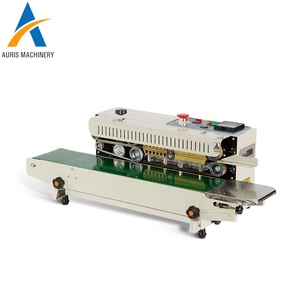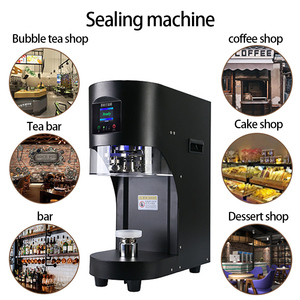
All categories
Featured selections
Trade Assurance
Buyer Central
Help Center
Get the app
Become a supplier

(1573 products available)


















Market Overview: The air tight sealing machine market has demonstrated robust growth, with a global market size increasing from approximately USD 682.75 million in 2023 to USD 719.45 million in 2024, reflecting a steady upward trend. This growth trajectory is projected to continue at a compound annual growth rate (CAGR) of 5.95%, potentially reaching USD 1.02 billion by 2030, according to 360iResearch™. Such growth is primarily driven by the expanding demand across various sectors, including manufacturing, food and beverages, and electronics, where air tight sealing machines are essential for ensuring product integrity and safety. The Asia-Pacific region stands out as a dominant market, fueled by rapid industrialization and a growing focus on energy efficiency and sustainability initiatives in emerging economies.
Industry Insights: Consumer behavior is shifting towards greater emphasis on quality assurance and packaging efficiency, which enhances the demand for air tight sealing machines. As companies increasingly adopt advanced technologies, the competitive landscape is marked by significant investments in research and development aimed at innovating energy-efficient solutions. Major players in this market, including established firms and regional manufacturers, are diversifying their offerings to cater to niche applications and specific customer needs. Additionally, the integration of smart technologies into sealing machines is reshaping operational efficiencies, which is crucial for maintaining market competitiveness. With these dynamics at play, the air tight sealing machine market is poised for sustained growth, driven by evolving consumer preferences and technological advancements.
The role of a food vacuum sealer machine goes well beyond just avoiding air exposure. Products like the ones below provide commercial enterprises with affordable sealing machine options that add to shelf life and profitability.
Cap-lock sealers
Cap-lock air-tight sealing machines achieve secure container sealing through die-locking caps. This unique design combines the cap's bottom part, which has a seal, with a counter-die on the container's neck. When the two parts lock together, the seal component deforms until it encompasses the container's neck and lip, creating a tight seal. The deformed part will generally return to its original shape after unlocking. As a rule, die-lock cap seals work better for containers with an engineered neck and lip.
Induction sealers
Induction sealer machines are mostly used for plastic and glass containers. They comprise a non-touch, thermal sealing method creating a seal by integrating a foil disc and aContainer. The process needs an induction coil and a power supply. Lately, fridges and freezer packaging have included plastic induction liners under caps. They seal but allow for some membrane passing. Upon capping a container, the coil energizes a magnet core, which emits an electromagnetic field that compels the liner to heat. No heat is given to the Container interior. Heat makes the liner contract and bond to the Container.
Pressure sensitive sealers
Most container types can use pressure sensitive sealers. They use the closure's pressure to deform the seal, which in turn, makes it come into contact with the container, thereby creating a seal. This is the most common container sealing method for plastics.
Flexi-ble sealing machine
This is a sealer that uses a flexible liner to seal Containers. Usually, it involves a rubber liner compressed against the Container by a force exerted in the liner by a vacuum. The vacuum is formed in the space between the Container and the liner, and the reflection of the rubber liner pulls back after the vacuum disappears, thus allowing the Container to come out.
The food and beverage industry makes extensive use of air-tight sealers, especially for jars and cups, since consumers are increasingly interested in product quality and freshness. Packaging perishable and non-perishable food items, including jam, jelly, peanut butter, pickles, tuned cups, smoothies, coffee, and other items. Gerdon paste sealing machines, which come in both automatic and semi-automatic models, are an illustration of this. Paste products in polyethylene terephthalate (PET), polypropylene (PP), polystyrene (PS), and polyvinyl chloride (PVC) cups can be sealed with these machines. Before sealing, vacuum sealing machines can also be used to remove the air from the container and create an even tighter seal.
Air-tight sealing machines for jars are versatile pieces of equipment that can also be used to package pharmaceuticals such as medicines, vitamins, supplements, moisturizers, serums, and other products. Depending on the material and cap design, air-tight sealing machines can extend the shelf life of these products by ensuring that the container is securely sealed. Reducing container-stored medicine's exposure to air, moisture, and other potential contaminants can enhance its efficacy and purity.
Chemical industries also make use of these machines, particularly in industries that package pesticides, herbicides, and other potent chemicals that require air-tight containers to prevent leaks or spills. Pesticides and herbicides must be securely packed to prevent air, moisture, and other environmental factors from getting inside the container and breaking down the chemical. As a result, every part of the chemical industry's supply chain, from production to storage to transportation, must be meticulously observed to guarantee that there are no leaks or spills. Air-tight sealers help ensure this by sealing containers before they are transported or stored.
Air-tight sealing machines are not limited to food and beverage, pharmaceuticals, and chemical industries. They are used in many other industries, including cosmetics and personal care, to package products such as creams, lotions, scrubs, masks, hair products, and other items in jars, tubs, and containers; seeds and fertilizers industry to package seeds, fertilizers, soil, and other agricultural products in bags, jars, and containers; and mining industry to package mining chemicals and other materials in containers that require air-tight seals.
These machines can also be integrated into production lines to provide continuous sealing at high capacities. Whether used in industrial-scale production facilities or artisanal food production, air-tight sealing machines remain essential to producer and consumer expectations.
Choosing an air-tight sealing machine requires careful consideration of various factors. Here are some tips to help make the right choice:
Determine production needs and requirements:
Businesses need to consider their production capacity, sealing speed, and volume. It is crucial to assess the number of containers and sealing requirements to determine the suitable machine size and compatibility.
Container compatibility:
The air-tight sealing machine containers businesses use must be compatible with their shape, size, and material. Therefore, it's essential to evaluate factors like the container's design and weight before selecting an appropriate sealing solution.
Sealing method:
Choose an air-tight sealing machine that suits the business's requirements. Consider the advantages and disadvantages of each sealing method, such as their effectiveness, aesthetics, cost, and the level of protection provided.
Quality and reliability:
Opt for a machine from a reputable manufacturer known for producing high-quality sealing equipment. To ensure consistent performance and durability, it is advisable to choose machines with good reliability and longevity.
Ease of use and automation:
Consider the machine's operation and automation features. Choose a machine that is easy to operate and can be automated to save labor and improve efficiency.
Safety features:
When working with sealing machines, safety should be a top priority. Look for machines equipped with emergency stop buttons, safety covers, and overload protection to prevent accidents and ensure operator safety.
Cost and budget:
Consider the initial purchase cost of the machine and operation and maintenance expenses in the future. Find a machine that offers good cost performance according to the budget and long-term development plan.
Technical support and after-sales service:
When selecting a sealing machine, it is essential to consider the availability of technical support and after-sales service from the supplier. Opt for a reliable supplier that can provide comprehensive customer service. This ensures prompt assistance and spare parts whenever required.
Q: What is the difference between vacuum and air seal packaging?
A: The vacuum sealing machine makes the outer bag press before the air inside of the bag is pulled out. This is not just sealing the bag but also removing the air from the inside. An air-seal machine just seals the bag without sucking out the air.
Q: What are the advantages of pouch sealing machines?
A: Pouch sealing machines offer several benefits, including product freshness, contamination prevention, and extended shelf life. These benefits are attractive selling points for retail customers.
Q: What is the vacuum seal making machine called?
A: The thermoforming vacuum sealer is the name used for the machine. It uses heat to form a hot plastic layer into a certain shape or mold.
Q: What are GMP air sealer machines?
A: Good manufacturing practice (GMP) considers sealing in nitrogen or other inert gases to create a modified atmosphere inside the package. This, along with hygienic design, reinforces product security.